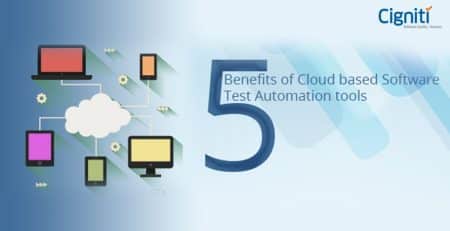6 benefits of shifting to Scriptless Test Automation
Test automation has become an integral component of the modern software development and testing lifecycles. With the rapidly increasing expectations for speed and scale from the end users, it is not feasible for organizations to continue with their legacy software testing processes.
Consequently, more and more organizations are embracing the Agile and DevOps methodologies to overcome the challenges posed by the traditional waterfall SDLC. However, as the software development process accelerates, it is essential for the QA function catches up to the speed and does not become a bottleneck. Although this is an ideal scenario, it is not what really happens.
There is undoubtedly a need for a faster and more efficient continuous testing process that can keep up with the DevOps or Agile-driven software development, and test automation seems to be the perfect solution. But in reality, most test automation initiatives fail and organizations fall back into the rut of manual testing. This ultimately creates QA and testing a significant bottleneck in the release process.
A well-functioning test automation framework requires continuous monitoring and maintenance of the test automation scripts. A test script is code written to instruct a test to run automatically on a user interface. It does so by identifying the input elements in the UI, navigating to the required UI component and waiting & verifying showing up of the input elements, simulating user inputs, identifying the output elements, waiting & verifying the display of results by the output elements, reading the results from the output elements, asserting that the output value and the expected value are equal, and then writing the test result into a log.
Test script maintenance is the most challenging aspect of test automation and therefore is one of the biggest reasons why test automation fails for most organizations. There is usually a lack of resources that have the right skills to write and maintain the test scripts. Further, the amount of effort that goes into their maintenance makes it difficult to scale the test automation efforts for an organization.
Scriptless test automation, by tremendously shrinking the need for test scripts to run automated test cases, makes for an ideal alternative to traditional test automation.
What is scriptless test automation
Contrary to what the name might suggest, scriptless test automation does not refer to a complete elimination of coding or test scripts. Rather, it considerably simplifies the process.
Scriptless test automation is about reducing the time to write the test scripts by shifting the focus on business logic validation. With scriptless test automation, the interaction between the testers and the code is minimized along with the amount of code required to run the automated test cases.
Also read: 4 Scriptless Test Automation Myths you should not believe
It is a flexible test automation framework that reduces the manual intervention into coding but automatically does the heavy lifting behind the scenes. Testers are simply required to indicate the steps instead of writing an actual code, and the framework can then translate those steps into test cases.
The test scripts generated in this way are reusable and therefore do not require high maintenance efforts from the manual resources. As a result, scriptless test automation enables an organization to efficiently scale up their QA processes while accelerating the time-to-market for their releases.
Benefits of scriptless test automation
Some of the key benefits of employing scriptless test automation into your QA function are:
- It does not require thorough programming knowledge and therefore, resolves the challenge related to the shortage of skilled resources.
- It accelerates the test scripting and designing process, thereby, speeding up the development as well.
- It can work parallel to the development process, which means that QA does not become a bottleneck at the end of an SDLC.
- By simplifying test script creation and automating test case designing, validation, and execution, it makes the test automation approach robust and scalable.
- With scriptless test automation, the test cases are easy to maintain and are reusable.
- As there is a minimum requirement for coding, business stakeholders can also participate in the QA process and offer valuable reviews for enhancing quality of the end product.
How can we help
With an extensive experience in streamlining the test automation efforts for organizations of all sizes, we offer tremendous benefits such as increased release velocity, reduced time to market & overall testing effort, resulting in a significant return on investment (ROI).
As part of a recent engagement, we helped the largest non-profit health insurance provider reduce their test cycle time by 30% by implementing a customized scriptless test automation framework.
Cigniti’s Test Automation Framework (TAF) is a proven, IP-led, tool-agnostic, platform-independent testing solution for automating complex business processes with support for industry design patterns such as Keyword, Data, and Hybrid to enable non-technical users to validate business processes in an automated manner.
Talk to our test automation experts and understand how we can help you scale up your test automation efforts as well.





Leave a Reply